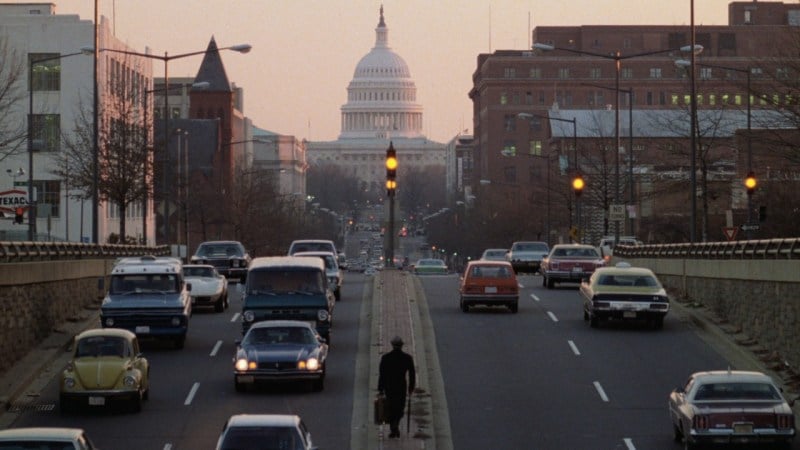The writer Toni Morrison once declared that art must be “political and beautiful at the same time.” Since the 2018 midterms are today, arts editors Amir Abou-Jaoude, Shana Hadi and Olivia Popp have selected seven artworks that effortlessly fuse politics and aesthetics.
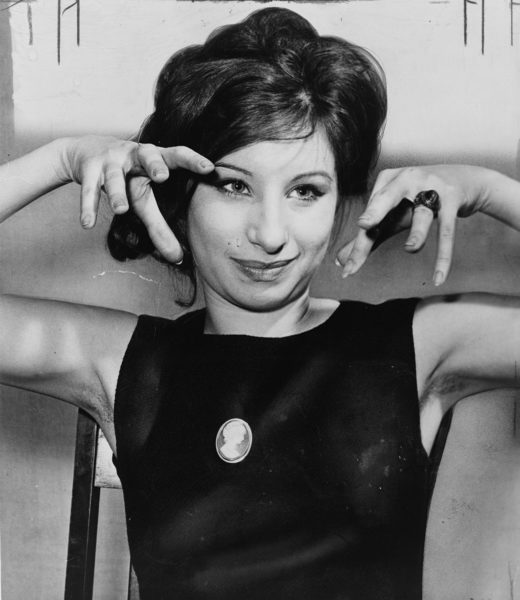
“Happy Days Are Here Again”
There’s an old political adage — a candidate campaigns in poetry and governs in prose. No medium manifests the lyrical elements of a campaign better than the campaign song. Campaign songs are usually faintly memorable or astonishingly inept. For example, in 1960, Frank Sinatra sang a charming cover of “High Hopes” in honor of John F. Kennedy. Just four years later, however, Ed Ames sang a breathtakingly banal version of “Hello, Dolly” called “Hello, Lyndon,” in which he jauntily described LBJ’s foreign policy experience. In recent years, candidates have called upon the talents of Dolly Parton, Stevie Wonder, U2, Aretha Franklin, Bruce Springsteen, Katy Perry and Sara Bareilles to make music and generate enthusiasm for political platforms.
Perhaps the most famous campaign song is “Happy Days Are Here Again,” and in some ways, it reflects the strengths and limitations of the medium. Milton Ager and Jack Yellen wrote the tune for Franklin Roosevelt’s 1932 campaign. In the midst of the Great Depression, it paints an unrelentingly rosy portrait of America. Like most rhetoric associated with campaigns, however, it is also vague. The lyrics declare “go long bad times” and promise “your cares and troubles are gone,” but give no indication as to how or why they’ve vanished.
Still, the song’s dearth of specifics does not render it meaningless. In 1962, Barbra Streisand added the song to her repertoire. Her expressive, powerful voice gives weight to the empty words. In her rendition, the song becomes a commanding statement of unbounded optimism. She fearlessly conveys impossible aspirations. Even as she says nothing of substance, it is difficult to stop listening to her. She captures the essence of a campaign. Even though many promises go unfulfilled, compelling candidates allow the American people to imagine a better country. Their stirring rhetoric makes their base revel in the return of “happy days.”
— Amir Abou-Jaoude
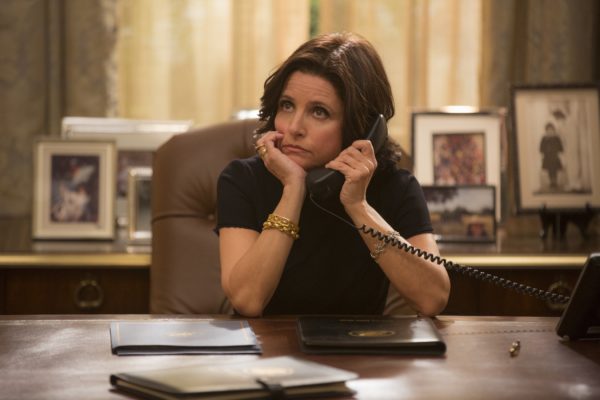
HBO’s “Veep”
Deviating from traditionally gritty political television, “Veep” (featuring the extraordinary comedic talents of Julia Louis-Dreyfus, Tony Hale, Anna Chlumsky and Matt Walsh — actually, just about everyone on that show is perfectly cast) takes an insider approach to politics. Notably a show that’s less about politics and more about the politics of politics, “Veep” highlights the complete absurdity of the American political system and satirizes the everyday happenings in the government, especially at an executive scale. “Veep” is also known for its verbally explicit nature, which is both often terribly hilarious but also often terribly offensive when taken out of context of these characters who, in actuality, are honestly all horrendous people (for the adventurous reader, Google something along the lines of ‘“Veep” insults compilation’ and you’ll find what you’re looking for).
With the election of Trump, the Internet has been quick to jump on the amusing similarities between many current political events and what actually happens on “Veep” (pairing the hilariously lighthearted closing “Veep” music, which is often used in tandem with a character fumble or disastrously awkward scenario on the show, with actual Trump footage). However, many working in politics have noted the uncanny (and alarming) accuracy of “Veep” over shows that romanticize the government like “The West Wing” — so maybe it’s less of a parody and more of a look behind the curtain.
— Olivia Popp
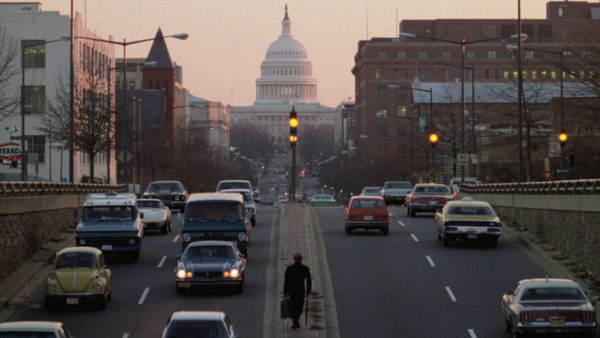
“Being There”
By 1979, the nation had endured the traumas of Vietnam and Watergate. The credibility gap had widened into an impassable chasm. In the White House, President Carter lambasted Americans for harboring malaise in their hearts. In Hollywood, filmmakers critiqued American institutions. In “Being There,” Hal Ashby examines the absurdity of American politics. The film’s protagonist is not a statesman, but a gardener. Chance has worked on a wealthy man’s estate for years. Unfortunately, Chance’s benefactor dies shortly after the film begins, and therefore, Chance must leave his home. He wanders through downtown Washington, D.C. until he meets Eve Rand, the wife of a prominent politician. The Rands erroneously come to the conclusion that Chance is an educated businessman, and soon, Chance has become a celebrity among Washington socialites.
Chance’s statements are simple. As a gardener, he cautions people “let us not fear the inevitable chill and storms of autumn and winter.” Then, politicians and the press take this horticultural wisdom and convert it into a metaphysical truth. They are desperate for a savior who will rescue them from the malaise of the mundane, so Chance’s every utterance becomes profound. As they twist his words, however, they only hear what they want to hear. Ultimately, this outsider to Washington confirms their own insider biases. Yet, Ashby refuses to remain a complete cynic. As Chance’s maxims pass into everyday parlance, he begins to affect the people around him. Washington may be a cesspool of corruption and sycophancy, but throughout the film, both Chance and Ashby are able to find transcendence in this sordid milieu.
— Amir Abou-Jaoude
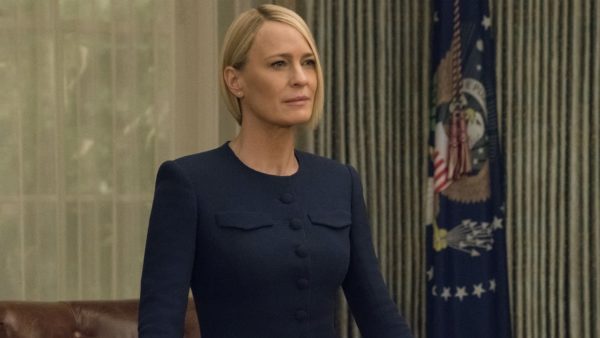
Netflix’s “House of Cards”
“House of Cards” holds its place in television history as a show that became peculiarly political even beyond the bounds of the (already very political) series itself. After actor Anthony Rapp came forward in a late 2017 allegation (just over one year ago!) about Kevin Spacey’s (playing the show’s original lead character, Frank Underwood) past sexual misconduct (and subsequently 15 more came forward), the “House of Cards” actor himself chose that moment to come out as gay — which was seen as a severe misstep, criticized by many queer artists and entertainers. Spacey was thus removed from the show, which is now in its shortened final season with all eight episodes released just a few days ago on Nov. 2.
“House of Cards” itself deals with betrayal, manipulation and corruption beyond the scope of the public eye. Critically acclaimed as a dark look into the “underbelly of the government” (The New York Times), “House of Cards” does concentrate on the government as an arena of play, but it takes everyday fears of contemporary society (the series spans the beginning of Obama’s second term through the start and first half of Trump’s presidency) and throws them into a whole new type of gameplay. It might be the government and public institutions who are those with the facade, but it’s the players involved who are ultimately making the moves.
— Olivia Popp
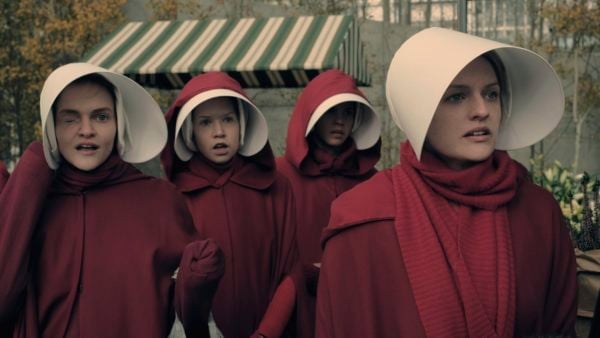
Margaret Atwood’s “The Handmaid’s Tale”
Though the novel was published in 1985, Atwood has proven herself as a “Prophet of Dystopia,” as the seeds of a repressive patriarchy are returning to our modern day. Offred, the narrator, lives in the Republic of Gilead — the former United States — where a perverse, fundamentalist reading of the Bible has led to a strict hierarchical society and curtailed human freedoms. Due to falling birth rates, fertile women have become akin to government property, labeled as “Handmaids” who must bear the children of their assigned “masters.” Through Offred’s flashbacks, we explore her personal story, the tales of the other handmaids, and the events leading up to Gilead’s rise. She never reveals her name. Her legal identity has become “Of Fred,” the male head of her household; similarly, she is forbidden from leaving the house alone, reading and writing, or speaking of the past.
Offred is valued only as long as her ovaries are viable, which chillingly recalls how even now, state laws limit women’s autonomy over their bodies, and Roe v. Wade could be overturned. Gilead began as a political revolution with the freezing of all female financial records and passports. Gradually, male Commanders stratified women across multiple castes (e.g. Wives, Handmaids, Marthas) to prevent their unification. Women can only fight amongst themselves for scraps of social status with no other avenue for freedom. As Offred somberly notes, now there’s a “women’s culture” like her feminist mother had dreamed — but of the wrong kind.
Elements from this novel have also become means of protest — you may recall the walls of activists dressed in the blood-red robes and white bonnets of the Handmaids at the inauguration, Pence’s Philadelphia visit, the Kavanaugh hearing, and demonstration outside Congress against the defunding of Planned Parenthood. Though a work of speculative fiction, it is not an escapist retreat — its lasting power lies in its dire warning. It implores us to protest today while we still have the freedom of speech. As Atwood states in The New Yorker in 2017, “Never has American democracy felt so challenged” — so let’s strive for a world where “The Handmaid’s Tale” is truly a fiction.
— Shana Hadi
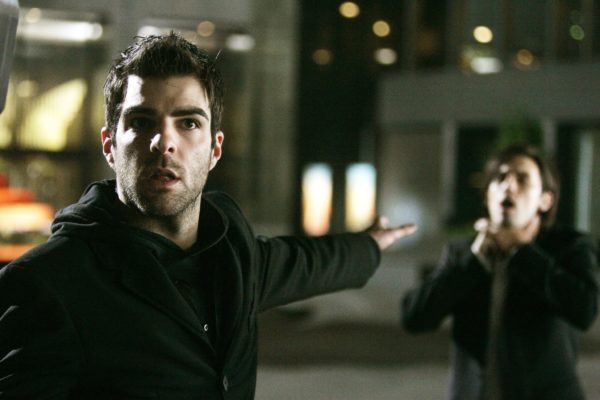
NBC’s “Heroes”
“Heroes” may be a less unconventional choice as art that deals with something innately “political,” but the underdog superhero show (2006-2010) was at the threshold of something new when it came out. Before any true mainstream superhero shows actually aired (“Iron Man,” the first of the Marvel Cinematic Universe films, had its theatrical premiere in May 2008), “Heroes” was giving Americans an example of superhero and sociopolitical television straight into their living rooms. Although, yes, the original Spider-Man trilogy with Tobey Maguire was 2002-2007, “Heroes” can be seen as a pioneering example of superhero television (and see how much there is now!).
Following a group of seemingly unrelated individuals as they suddenly all discover they have different superpowers, they become increasingly connected against an apocalyptic future that must be averted — if they work together. Facing either discrimination or religious-like obsession from outsiders, these superpowered individuals are sought after by the seemingly nefarious organization called The Company, which tracks down superpowered individuals for their supposed “benefit.” While the first season is really the only season worth watching for its narrative and artistic value (unless you’re a diehard fan), the latter seasons dive into more politically relevant storylines surrounding persecution of superpowered individuals, hiding one’s differences and using superpowers for good or for evil. Starring Hayden Panettiere and Milo Ventimiglia, this series marked landmark and defining roles for many actors on the revolutionary television series.
— Olivia Popp
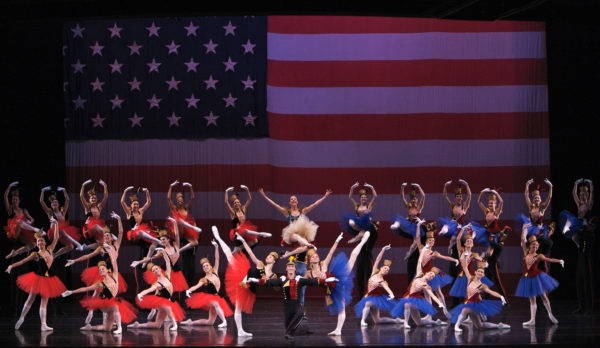
“Stars and Stripes”
Few George Balanchine aficionados would rank “Stars and Stripes” among his masterpieces. The ballet is set to “Stars and Stripes Forever,” and while John Philip Sousa’s march may be patriotic, it lacks the lyricism of Tchaikovsky’s melodies. The male dancers wear ROTC uniforms, and they perform duets with ballerinas dressed like Lady Liberty. Behind them is a backdrop of the American flag. Balanchine, who immigrated to the United States from Russia, certainly was proud of his adopted country. In fact, his dynamic, experimental and abstract choreography became an American export. The New York City Ballet would go on world tours to show how American citizens were reinventing a European discipline. Still, even the most ardent American might find “Stars and Stripes” sickening. Why did Balanchine need to craft such a blatantly nationalistic statement?
In some sense, “Stars and Stripes” captures Balanchine’s genius. It may not possess the rarefied resplendence or the stark simplicity of his other ballets, but nonetheless, he transfigures military exercises into graceful motion. The ROTC cadets appear in rigid geometric formations, but instead of marching, they execute pirouettes. Lady Liberty is no longer just a static figure. Instead, she expresses herself energetically and elegantly. Balanchine marries martial order and balletic finesse. Perhaps “Stars and Stripes” could be called kitschy or campy, but as Susan Sontag notes, the most effective camp involves “things being what they are not.” No ROTC drill is as refined as Balanchine’s choreography, and no ballet is as explicitly patriotic as “Stars and Stripes.” By forthrightly celebrating America, Balanchine makes us consider American symbols and his art form anew.
— Amir Abou-Jaoude
Contact Amir Abou-Jaoude at amir2 ‘at’ stanford.edu, Shana Hadi at shanaeh ‘at’ stanford.edu and Olivia Popp at oliviapopp ‘at’ stanford.edu.
